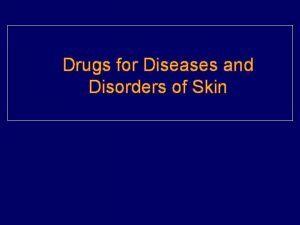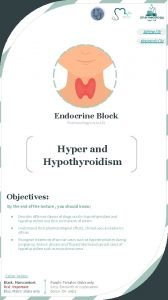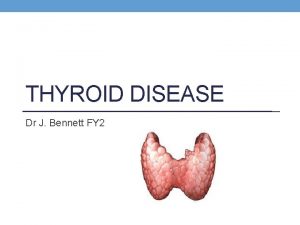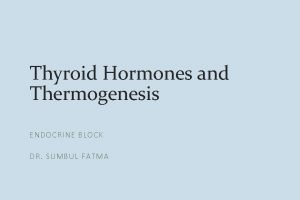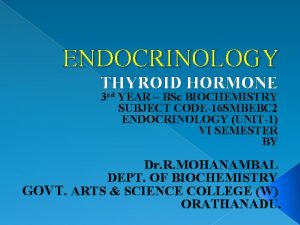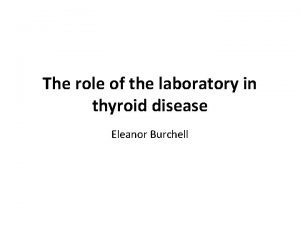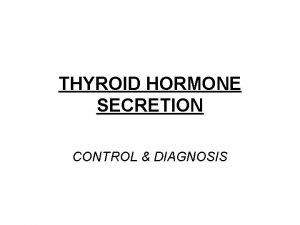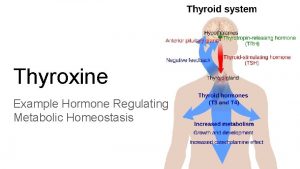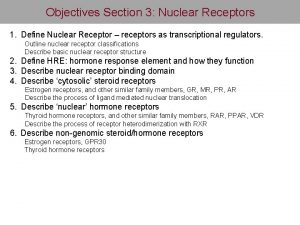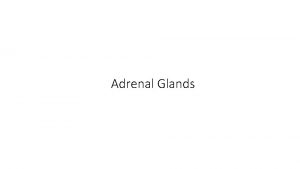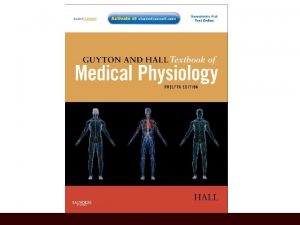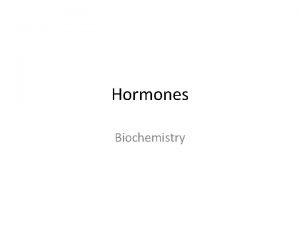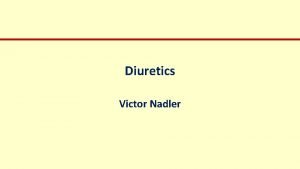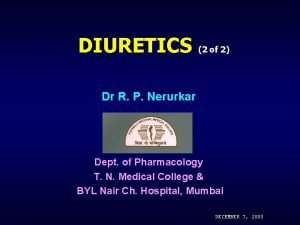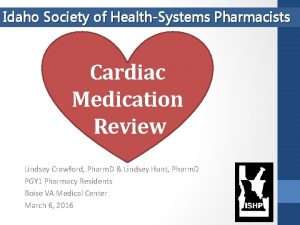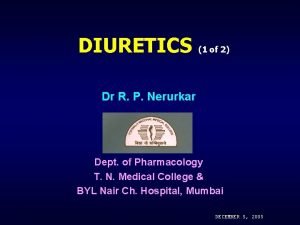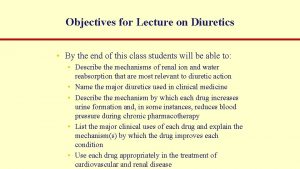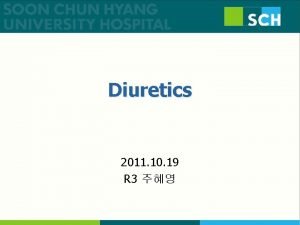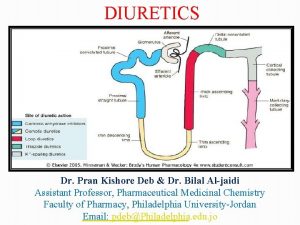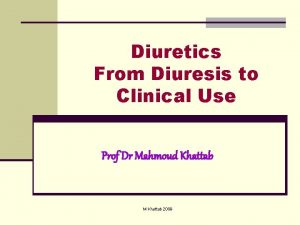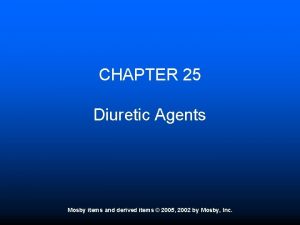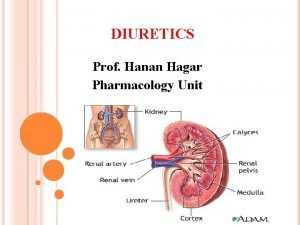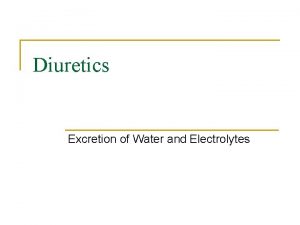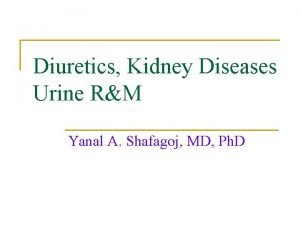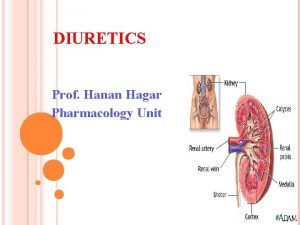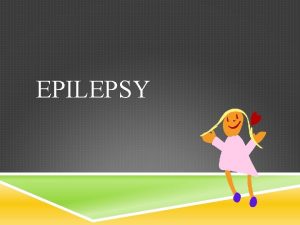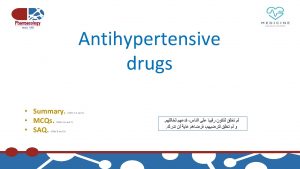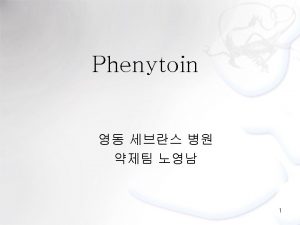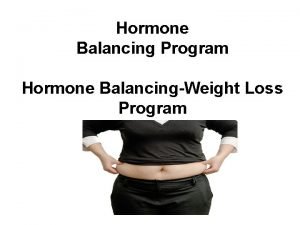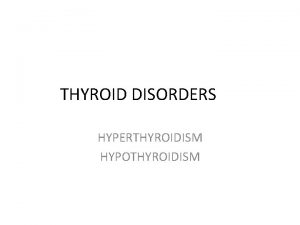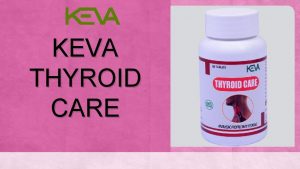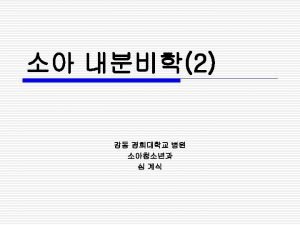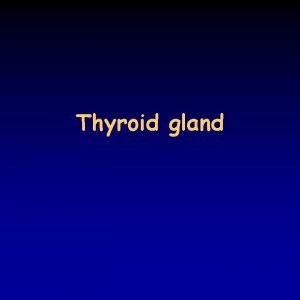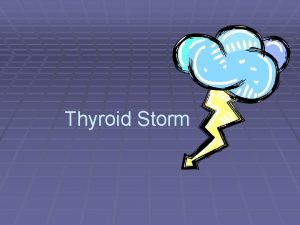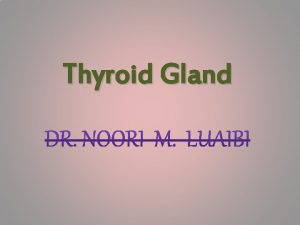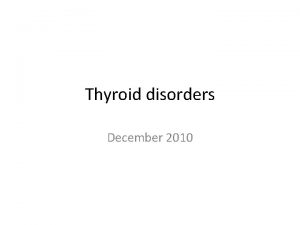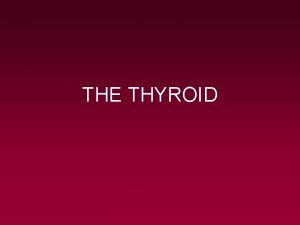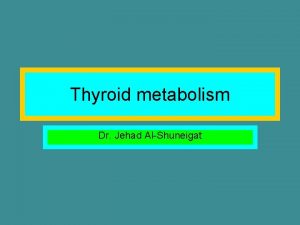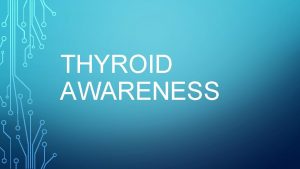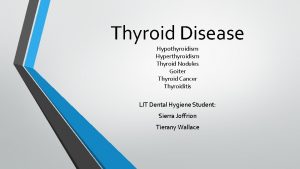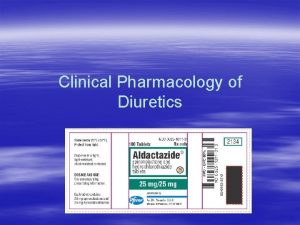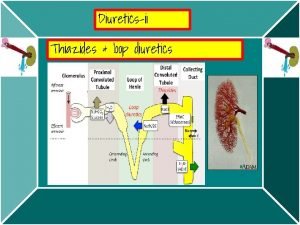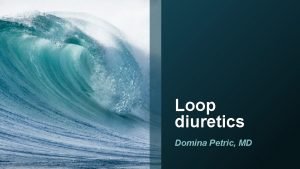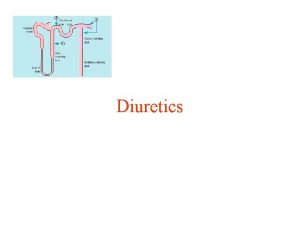Glucocorticoids Excessive thyroid hormone Diuretics Furosemide Cyclosporine Seizure

































- Slides: 33




� Glucocorticoids � Excessive thyroid hormone � Diuretics: Furosemide � Cyclosporine, � Seizure medications: Phenytoin, phenobarbital � Psychotropic: � Heparin methotrexate, tacrolimus Lithium,

� Initial evaluation: CBC Ø Ca, p, Cr Ø Alkaline phosphatase, aminotransferases Ø 25 -hydroxyvitamin D Ø TSH Ø 24 -hour urine for Ca and creatinine Ø

� Osteoporosis diagnosed when a radiograph shows signs of demineralization or compression fractures of vertebral bodies. � Techniques for evaluating bone mass: � Dual-energy � Quantitative � Ultrasound x-ray absorptiometry (DEXA) (CT) of spine.

� All postmenopausal women < 65 yr who have one or more additional risk factors for osteoporosis � All women > 65 yr regardless of additional risk factors � To document reduced bone density in patients with vertebral abnormalities or osteopenia on radiographs � To diagnose low bone mass in glucocorticoid-treated individuals � To document low bone density in patients with asymptomatic primary or secondary hyperparathyroidism

Calcium: � Goals of therapy for osteoporosis reduce bone resorption and enhance bone formation. � Bone loss occurs when Ca intake and absorption insufficient to balance daily Ca losses. � In absence of kidney stones or an underlying disorder of Ca metabolism, Ca intakes safe.

�Calcium carbonate: contains 40% elemental Ca should be taken with meals because of poor absorption in achlorhydric patients in absence of food.

�Calcium citrate: contains 24% elemental Ca, better bioavailability and is more absorbed well on an empty stomach in patients with achlorhydria.


Milk � Yogurt � Orange juice (with Ca) � Cheese � Ice cream (1/2 cup) � Soy milk (1 cup) � Beans (1/2 cup cooked) � Dark, green vegetables (1/2 cup cooked) � Almonds � Orange (1 medium) � � 300 mg � 250 mg � 300 mg � 195 to 335 mg � 100 mg � 300 mg � 60 to 80 mg � 50 to 135 mg � 70 mg � 60 mg

SELECTIVE ESTROGEN RECEPTOR MODULATORS �Tamoxifen: Ø Estrogen antagonist that binds to estrogen receptor Ø Estrogen-agonist effects on bone Ø Small increase in bone density of spine over 2 years, Ø No effect on radial bone density Ø 45% reduction at hip and 29% at spine fracture.

� Raloxifene: � FDA approved for prevention and treatment of osteoporosis � Estrogen agonist on bone � Antagonist effects on breast and uterus. � Increased BMD in lumbar spine by 2. 4%, in hip by 2. 4%, in total body 2% � Over 2 -year, significant reduction in vertebral fractures

�a potent inhibitor of osteoclastmediated bone resorption. � Human and salmon calcitonin available � Salmon calcitonin commonly used because greater potency. � Parenteral calcitonin (100 IU SC or IM three times a week or daily) � Maintain bone density or produce a small increase in bone mass in spine

� Nasal spray calcitonin absorbed through nasal mucosa � Approximately 40% as potent as parenterally administered (50 to 100 IU of injectable calcitonin comparable with 200 IU of nasal spray calcitonin). � Nasal calcitonin (200 IU/day) increases spinal bone density � No effect on proximal femur bone mass; � 36% reduction in vertebral fractures over 5 years.

� Adverse effects of parenteral calcitonin: nausea flushing local irritation at injection site � Calcitonin intranasally well tolerated � Rhinitis and nasal dryness and crusting potential side effects. � Calcitonin may beneficial analgesic response in presence of osteoporotic fractures.


�Alendronate (Fosamax) is FDA approved for prevention and treatment of osteoporosis. � Alendronate � (10 mg/day) produces: 8. 8% and 7. 8% increase in bone density in spine and femoral trochanter � Alendronate (70 mg) most commonly used dose for treatment of osteoporosis.

� Adverse � GI effects of bisphonates: symptoms: stomach pain esophagitis � Myalgias and arthralgias, � Osteonecrosis of jaw � Subtrochanteric fractures

�Risedronate: � Increased bone mass � Reduced risk of new vertebral fractures � Significant reduction in risk of hip fracture � Approved for prevention and treatment of osteoporosis(35 mg once a week) � Risedronate well tolerated even in patients with mild GI symptoms.

�Ibandronate: � Approved for treatment and prevention of osteoporosis. � Vertebral � 150 fractures reduce about 50%. mg/month � Intravenous ibandronate in a dose of 3 mg every 3 months

�Zoledronic acid approved for treatment and prevention of osteoporosis. � 5 mg once a year by intravenous infusion, � Risk of vertebral fractures reduce 68%, hip fractures 40%

� Side effects: arthralgias and myalagias; � Patients should have serum Ca and 25 -OHD levels monitored and replaced to NL levels before treatment.

� Denosumab (Prolia): Monoclonal antibody that against RANKL Approved for treatment of osteoporosis. 60 mg subcutaneously every 6 months for 36 months Vertebral fractures reduce 68%, hip fractures 40%, Well tolerated, Adverse events: skin infection Before treatment Ca and 25 -OHD should be checked and replaced if needed up to normal levels.

� PTH significantly increase bone mass in spine, � Fortéo � 20 approved for treatment of osteoporosis. μg/day for 21 months. � Lumbar spine bone mass increased between 9% and 13% , � Hip bone mass increased slightly.

� Risk of new vertebral fractures reduce nearly 70%. � Fortéo is given daily injection. � Individual may experience headache, nausea, flushing with initiation of treatment, but these side effects become less severe after few weeks.

�PTH: Ø Stimulates new bone formation Ø Increases bone mass Ø Reduces new vertebral and nonvertebral fractures

� Subcutaneous injection daily for 18 to 24 months. � Other routes of administration: intranasal skin patch.

� Physiologic doses of vitamin D important to NL bone mineralization. � Individuals 50 years of age and older should take at least 600 to 1000 IU of vitamin D daily � Low vit D levels increase risk of bone loss and fracture.

� Low 25 -OHD levels during the winter and spring associated with decreases in bone density. � Daily treatment with 700 IU of cholecalciferol and 500 mg of Ca carbonate reduced rate of bone loss in: femoral neck, spine, total body � Decreased incidence of nonvertebral fractures by 50%. � Patients require a vit D intake that in 25 -OHD level of at least 30 ng/m. L.

� Patients starting GC therapy at a dose equivalent to prednisone ≥ 5 mg/day for 3 mo or longer should: � Modify risk factors for osteoporosis (stop smoking, decrease alcohol consumption) � Start regular weight-bearing physical exercise � Initiate intake of Ca (total 1500 mg/day) and vit D(400 -800 I U/day) � BMD to predict risk of fracture and bone loss � Initiate bisphonate therapy (alendronate 5 mg/day or 35 mg/wk, or risedronate 5 mg/day or 35 mg/wk)

� If T-score is < − 1: � Risk factor modification including reducing risk of falls � Regular weight-bearing physical exercises � Ca and vit D supplementation � Bisphonate therapy (alendronate 10 mg/day or 70 mg/wk, or risedronate 5 mg/day or 35 mg/wk); � If bisphonates contraindicated or not tolerated, calcitonin as second-line agent, intravenous bisphonate (pamidronate or zolendronate), parathyroid hormone � Repeat BMD measurement annually or biannually
 Indication of cyclosporine
Indication of cyclosporine Thyroid dwarfism
Thyroid dwarfism Potencity
Potencity Throid
Throid Thyroid hormone secretion
Thyroid hormone secretion Thyroid storm slideshare
Thyroid storm slideshare Wolff chaikoff effect
Wolff chaikoff effect Thyroid hormone secretion
Thyroid hormone secretion Iodine deficiency
Iodine deficiency Thyroid hormone receptor
Thyroid hormone receptor Zona reticularis gonadocorticoids
Zona reticularis gonadocorticoids Glucocorticoids
Glucocorticoids Glucocorticoids mineralocorticoids and androgens
Glucocorticoids mineralocorticoids and androgens Furosemide side effects
Furosemide side effects Furosemide 40 mg tablet picture
Furosemide 40 mg tablet picture Bumetanide vs furosemide
Bumetanide vs furosemide Lasix to bumex
Lasix to bumex Diuretics classification
Diuretics classification Loop diuretics adverse effects
Loop diuretics adverse effects Loop diuretics
Loop diuretics Dr mukhopadhyay deb
Dr mukhopadhyay deb Diuretics classification
Diuretics classification Potassium sparing diuretics mechanism of action
Potassium sparing diuretics mechanism of action Acidifiers and alkalinizers
Acidifiers and alkalinizers Acetazolamise
Acetazolamise Potassium sparing diuretics site of action
Potassium sparing diuretics site of action Anti diuretics drugs name
Anti diuretics drugs name Diuretic side effects
Diuretic side effects Potassium sparing diuretics mechanism of action
Potassium sparing diuretics mechanism of action Diuretics side effects
Diuretics side effects Diuretics classification
Diuretics classification Isothenuria
Isothenuria Diuretics classification and mechanism of action
Diuretics classification and mechanism of action Seizure precautions bed rails
Seizure precautions bed rails
